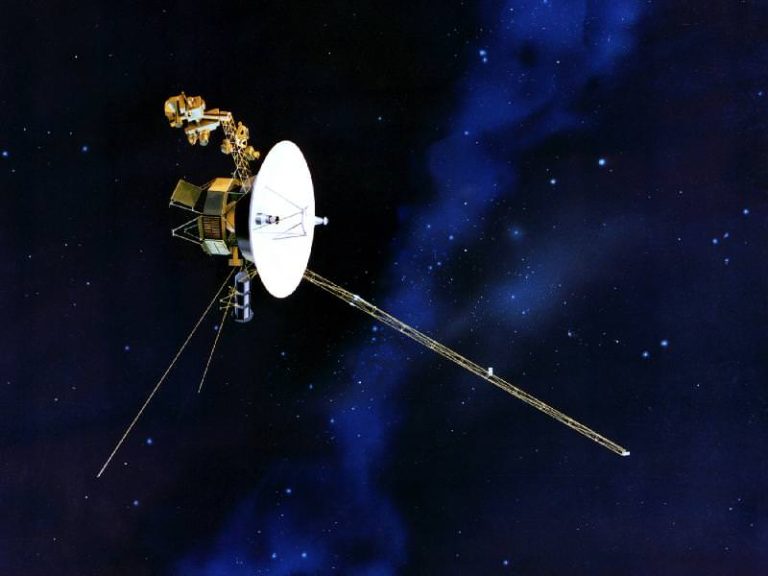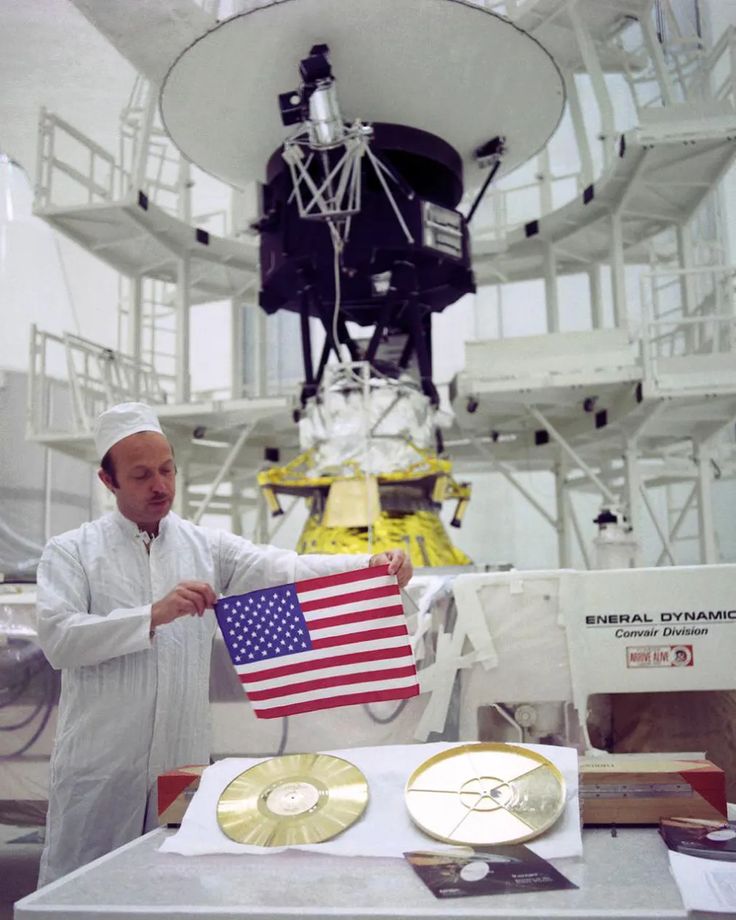Voyager 1 Reaches Out After Decades with a 1981 Device
The Voyager mission has surpassed all expectations. Originally designed for a brief, focused study of Jupiter and Saturn, Voyager 1 has continued to travel outward and now provides humanity with information from interstellar space. Despite nearly half a century in space and low power levels, Voyager 1, equipped with a backup transmitter from 1981, recently re-established communication after a system issue. This resilience highlights NASA’s strategic design and the enduring spirit of human exploration.
Summary
- Mission Background: Launched in 1977, Voyager 1 was initially meant to study Jupiter and Saturn but extended its mission to explore beyond the solar system.
- Current Position: Voyager 1 is now over 15 billion miles from Earth, in interstellar space, traveling at about 38,000 mph.
- Communication Challenges: Recently, Voyager 1’s primary radio transmitter turned off unexpectedly, halting communication with Earth.
- Backup Activation: NASA successfully reconnected with Voyager 1 through an older backup transmitter last used in 1981.
- Radiation in Interstellar Space: The spacecraft endures high levels of radiation in interstellar space, which could have unforeseen effects on its systems.
- Future of the Mission: With limited power, NASA aims to continue operations with Voyager 1 through 2025 by carefully managing energy use.
- NASA’s Deep Space Network: This network played a crucial role in re-establishing communication, picking up faint signals from Voyager 1’s backup system.
- Resilience of Voyager: This nearly 50-year-old mission exemplifies human ingenuity and the durability of NASA’s engineering.
We’re all about long-distance commitment… with the Deep Space Network!
Since launching in 1977, my twin and I are now the two farthest human-made objects from Earth. Traveling through interstellar space, we still communicate with our teams back home thanks to the DSN. -V2 pic.twitter.com/YBtlMatPBV
— NASA Voyager (@NASAVoyager) October 23, 2024
The Incredible Journey of Voyager 1: An Exploration Beyond the Stars
In 1977, NASA launched Voyager 1 as part of a mission to explore the outer planets. Voyager 1, along with its twin Voyager 2, was primarily designed to study Jupiter and Saturn, their moons, and Saturn’s rings. Originally, the mission was intended to last only five years. However, after exceeding expectations with groundbreaking observations, NASA extended the mission to explore Uranus and Neptune.
In August 2012, Voyager 1 became the first human-made object to enter interstellar space—a region outside the heliosphere (the bubble-like region dominated by solar wind). This historic milestone marked a new chapter, as Voyager 1 began collecting data on the particles and magnetic fields present between stars.
According to NASA, “Voyager 1 and 2 are the only spacecraft operating outside of the heliosphere, exploring the vast unknown” (NASA Mission).
At approximately 15.4 billion miles from Earth, Voyager 1 faces the challenge of operating on limited power. As the spacecraft generates around 4 fewer watts of power each year, NASA has had to shut down non-essential systems to keep it running.
On October 16, 2024, mission control sent a command to activate a heater on Voyager 1. Two days later, however, they realized something was amiss when the spacecraft failed to respond. By October 19, communication had completely ceased. This unexpected issue triggered the fault protection system, which shut down Voyager’s X-band transmitter—its main line of communication.
The Role of the S-Band Transmitter
Engineers quickly resorted to a lesser-used S-band transmitter, last activated in 1981. Using NASA’s Deep Space Network (DSN)—a trio of massive ground-based antennas positioned across Earth to communicate with distant space probes—they managed to pick up a faint signal from the backup transmitter. This outcome was uncertain; given the spacecraft’s distance and age, they had no guarantee that the backup would still function after decades.
“All the decisions we will have to make going forward are going to require a lot more analysis and caution than they once did,” said Voyager project manager Suzanne Dodd in a recent NASA update (NASA Voyager Blog).
Voyager’s Resilience and NASA’s Strategic Planning
Key Milestones of the Voyager Mission
| Year | Milestone |
|---|---|
| 1977 | Voyager 1 and 2 launched |
| 1979 | Jupiter flyby: Extensive study of Jupiter’s moons |
| 1980 | Saturn flyby: Discovery of complex ring systems |
| 1989 | Neptune flyby: Completion of planetary tour |
| 2012 | Voyager 1 enters interstellar space |
| 2024 | Reconnects through 1981 transmitter |
The Voyager mission is a testament to the durability of NASA’s engineering. Each critical milestone along Voyager 1’s journey has provided invaluable data, transforming our understanding of planetary systems and interstellar space.
The ongoing mission requires precise power management due to the limited energy available from Voyager’s Radioisotope Thermoelectric Generators (RTGs), which convert the heat from radioactive decay into electricity. NASA anticipates that power constraints may require shutting down even more systems, aiming to keep Voyager operational until at least 2025.
“Voyager’s survival is a story of resilience, patience, and innovation. Every step forward is an uncharted adventure,” says Suzanne Dodd, reaffirming NASA’s commitment to explore the unknown.

Power Management Plan
| Component | Priority Level | Power Requirement |
|---|---|---|
| Communication System | High | 10 watts |
| Science Instruments | Medium | 6 watts |
| Heater System | Low | 3 watts |
Enduring the Rigors of Interstellar Space
Voyager 1’s journey into interstellar space brought it into an environment filled with high-energy particles. Unlike the solar system, where the heliosphere provides some level of protection, interstellar space is largely unshielded, exposing Voyager to intense cosmic radiation.
According to a NASA report on interstellar travel (NASA Science), “Interstellar space is an alien environment, one where cosmic rays reign supreme.”
Despite its age, Voyager 1 continues to collect data on cosmic rays, interstellar plasma density, and magnetic fields. Each new piece of information aids scientists in understanding the characteristics of interstellar space.
For example, Voyager 1 detected a high concentration of charged particles when it crossed the heliopause, providing insights into how solar winds interact with interstellar matter. This data offers clues about the broader galaxy and may inform future deep-space missions.
The Voyager mission has captured the world’s imagination. Voyager 1 and 2 carry a golden record that includes sounds, music, and images from Earth—a message intended for any extraterrestrial civilization that might encounter the probes. This gesture symbolizes humanity’s desire to connect with the unknown.
The legacy of Voyager has inspired modern space missions, including NASA’s Artemis program and the development of nuclear propulsion technologies, which could reduce travel times for deep-space missions in the future. According to NASA, “The achievements of Voyager are a foundation on which we build our dreams of interstellar exploration.”

NASA hopes to extend Voyager 1’s mission through 2025 by optimizing power use and continuing to troubleshoot any new challenges. Even after the spacecraft can no longer send data, its trajectory will carry it further into the unknown, potentially lasting billions of years as a silent ambassador of Earth.
Voyager 1’s achievements demonstrate the resilience of well-engineered technology and the relentless drive of human exploration. As NASA’s oldest active mission, Voyager’s journey through interstellar space is a testament to innovation and curiosity. While communication with the probe may become increasingly difficult, its legacy will inspire generations of scientists and engineers to continue exploring the cosmos.
References
- NASA JPL
- NASA – Deep Space Network
- NASA – Science Mission Directorate
- NASA – Voyager Telemetry Data Investigation
- NASA Blog on Voyager



